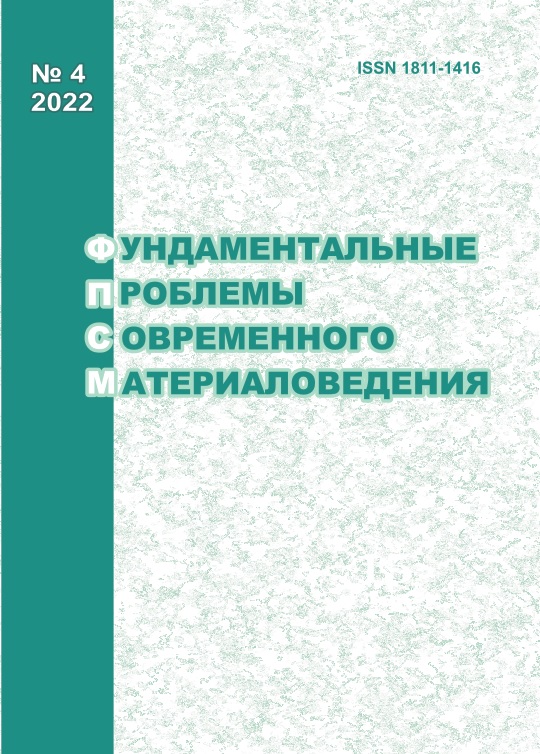CORROSION PROPERTIES AND TRIBOLOGICAL BEHAVIOR OF TUNGSTEN CARBIDE COATINGS WITH ALUMIDE MATRIX ON SS AISI304
10.25712/ASTU.1811-1416.2022.04.010
Keywords:
coatings, electrospark deposition, stainless steel AISI304, tungsten carbide, wear, corrosion, microhardness, coefficient of friction, oxidation resistanceAbstract
WC-Fe-Al coatings were obtained by the electrospark deposition of AISI304 stainless steel in an anode mixture of aluminum and iron granules with the addition of tungsten carbide powder. The coatings had a two-phase microstructure represented by an intermetallic Fe-Al matrix with large inclusions of tungsten carbide. Impedance spectrometry in 3.5 % NaCl showed a decrease in the corrosion resistance of WC-Fe-Al coatings with an increase in the concentration of tungsten carbide in the anode mixture. Polarization tests showed that with an increase in the content of tungsten carbide in the anode mixture, the corrosion potential of coatings monotonically increased from -0.77 to -0.61 V. At the same time, the corrosion current density increased linearly from 19.4 to 62.7 µA/cm2. High-temperature oxidation of coatings are intensified with an increase in the concentration of tungsten carbide at a temperature of 900 °C for 100 hours of testing, however, moderate reinforcement of the Fe-Al matrix with tungsten carbide did not worsen its oxidation resistance. With increase in the of reinforcing ceramic content in the Fe-Al coating, its microhardness increases from 7.3 to 11 GPa, the coefficient of friction decreases to 0.51 and wear resistance improves. The use of WC/Fe-Al coatings on AISI304 stainless steel makes it possible to increase the hardness and oxidation resistance of steel surface, reduce the coefficient of friction, and improve wear resistance up to 19 times.











 Journal «Fundamental’nye problemy sovremennogo materialovedenia / Basic Problems of Material Science»
Journal «Fundamental’nye problemy sovremennogo materialovedenia / Basic Problems of Material Science» This work is licensed under a
This work is licensed under a 
